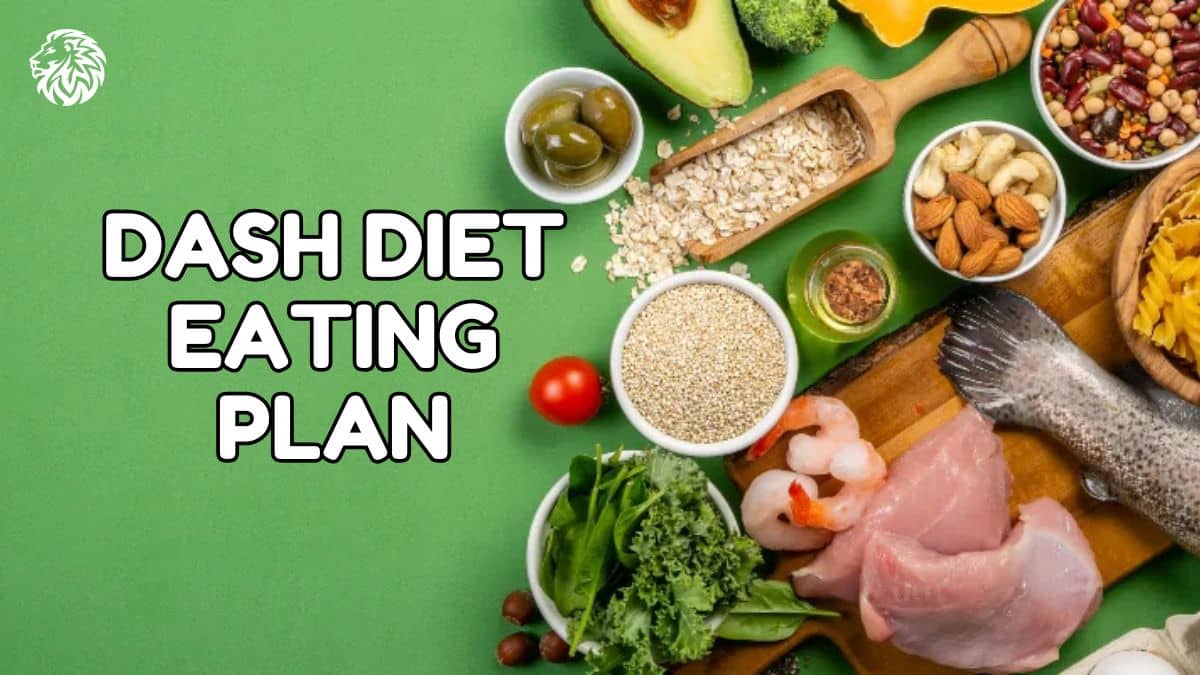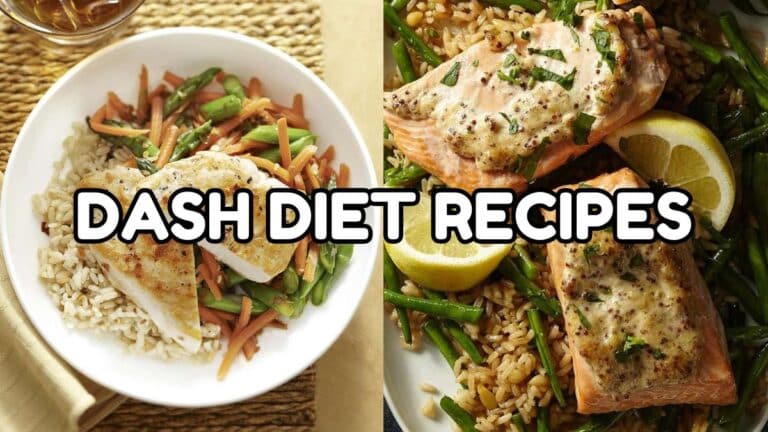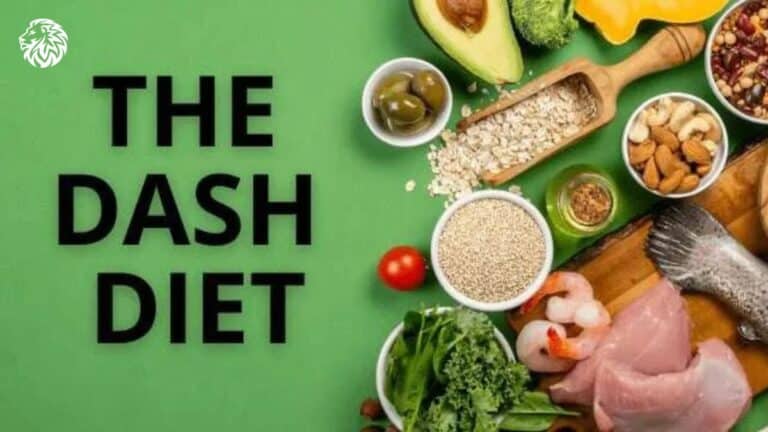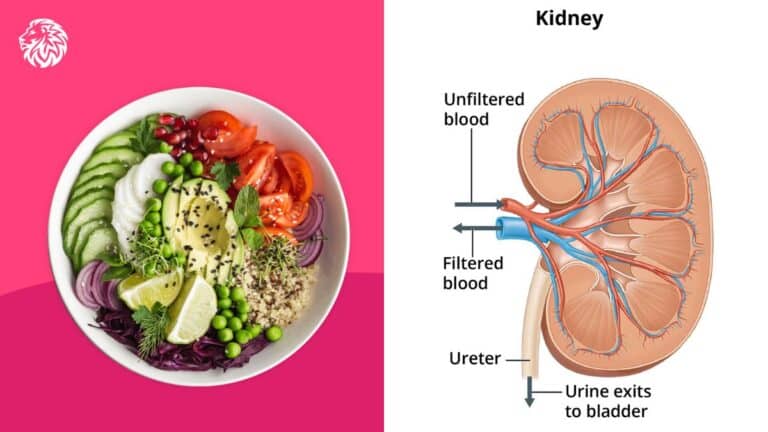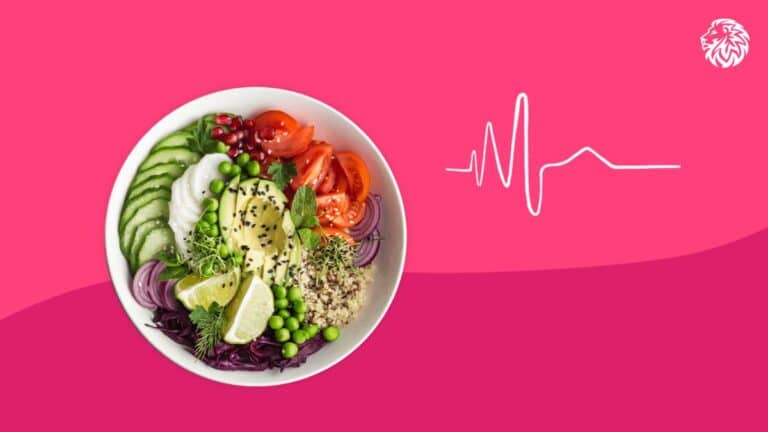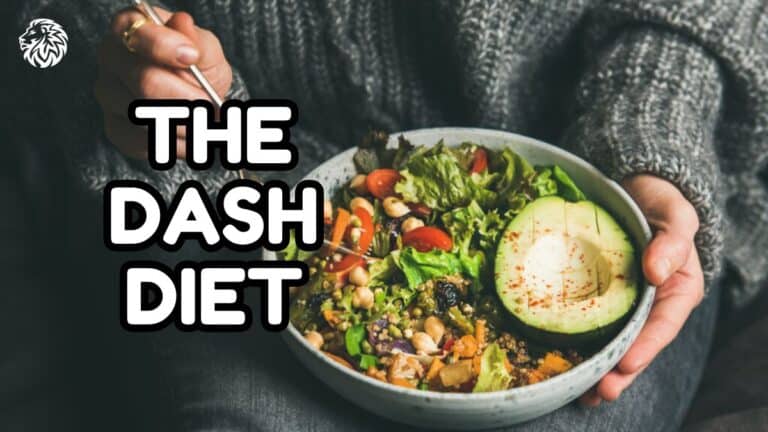The Dietary Approaches to Stop Hypertension (DASH) diet is a flexible, heart-healthy eating plan designed to reduce high blood pressure and improve overall health. It focuses on nutrient-rich foods like fruits, vegetables, whole grains, lean proteins, and low-fat dairy while limiting salt, sugar, and unhealthy fats. This balanced approach makes it a sustainable option for long-term health benefits, and it’s suitable for most people looking to improve their diet.
In this post, we’ll break down the core principles of the DASH diet, explain how it works, and provide practical tips to help you incorporate it into your daily life.
What is the DASH Diet?
The DASH diet was originally developed to help people lower their blood pressure without medication, but its benefits extend far beyond heart health. The diet encourages you to focus on whole, minimally processed foods that are rich in key nutrients like potassium, calcium, magnesium, and fiber—while reducing sodium intake. These nutrients work together to regulate blood pressure, improve cholesterol levels, and reduce the risk of chronic diseases such as stroke, diabetes, and certain cancers.
Key Principles of the DASH Diet
The DASH diet focuses on specific food groups and their recommended daily servings. Here’s a breakdown of what a typical DASH Diet eating plan looks like:
1. Fruits and Vegetables
- Goal: 4–5 servings each per day
- Why they matter: Fruits and vegetables are naturally low in sodium and high in fiber, potassium, and antioxidants, all of which contribute to heart health.
- How to add them: Include a variety of colorful produce in every meal. Have a banana with your breakfast, snack on apple slices or baby carrots, and add leafy greens like spinach or kale to lunch and dinner.
2. Whole Grains
- Goal: 6–8 servings per day
- Why they matter: Whole grains are packed with fiber, which helps regulate digestion and keeps you feeling full. They also provide essential nutrients like B vitamins and minerals.
- How to add them: Opt for whole grain bread, brown rice, oats, and quinoa instead of refined grains like white bread or pasta. Start your day with oatmeal or whole grain cereal, and choose whole grain options when planning your meals.
3. Lean Proteins
- Goal: 2 or fewer servings of lean meats, poultry, or fish per day
- Why they matter: Protein is essential for muscle repair and overall body function. Lean protein sources provide the necessary protein without excessive unhealthy fats.
- How to add them: Incorporate skinless poultry, lean beef, or fish like salmon and tuna. You can also explore plant-based protein sources like tofu, lentils, and beans.
4. Low-Fat Dairy
- Goal: 2–3 servings per day
- Why it matters: Dairy products provide calcium and vitamin D, both crucial for bone health. Choosing low-fat or fat-free options ensures you get the benefits without excess saturated fat.
- How to add them: Include low-fat milk or yogurt in your breakfast or snack. You can also use low-fat cheese in salads or as a topping for soups and stews.
5. Nuts, Seeds, and Legumes
- Goal: 4–5 servings per week
- Why they matter: These foods are rich in heart-healthy fats, protein, and fiber, helping you feel full while providing essential nutrients.
- How to add them: Snack on a handful of almonds or walnuts, add chickpeas to your salads, or use sunflower seeds as a crunchy topping for yogurt or oatmeal.
6. Fats and Oils
- Goal: 2–3 servings per day
- Why they matter: Not all fats are bad. The DASH diet encourages healthy fats, such as those found in olive oil and avocados, while limiting unhealthy trans and saturated fats.
- How to add them: Use olive oil for cooking, drizzle it on salads, and include avocados in your meals for a boost of healthy fats. Be mindful of portion sizes, as fats are calorie-dense.
7. Sweets
- Goal: 5 or fewer servings per week
- Why they matter: The DASH diet doesn’t completely cut out sweets, but it emphasizes moderation. Limiting sugary foods helps reduce the risk of weight gain, diabetes, and other health issues.
- How to add them: Treat yourself to a small dessert or piece of dark chocolate occasionally. You can also satisfy your sweet tooth with naturally sweet options like fresh fruit.
8. Sodium
- Goal: 1,500–2,300 mg per day
- Why it matters: High sodium intake contributes to elevated blood pressure. The DASH diet recommends reducing sodium by avoiding processed foods and choosing fresh, unseasoned ingredients.
- How to reduce it: Cook at home more often, using herbs and spices instead of salt to flavor your food. Read labels carefully, as many packaged foods contain hidden sodium.
Benefits of the DASH Diet: A Closer Look
The DASH diet offers a broad range of health benefits, making it an excellent choice not only for lowering blood pressure but also for improving general well-being. Here are the key benefits in more detail:
1. Improved Heart Health
The primary focus of the DASH diet is to reduce high blood pressure (hypertension), a major risk factor for heart disease and stroke. By reducing sodium intake and emphasizing foods rich in potassium, calcium, and magnesium, the DASH diet helps balance blood pressure levels. Potassium helps to neutralize the negative effects of sodium, while calcium and magnesium play crucial roles in maintaining healthy blood vessel function. This dietary approach can significantly reduce the risk of cardiovascular events, such as heart attacks, especially for those with high blood pressure.
In addition to lowering blood pressure, the diet’s emphasis on fruits, vegetables, and whole grains can help reduce LDL (bad) cholesterol levels. Lower cholesterol levels mean a reduced risk of plaque buildup in arteries, contributing to healthier blood flow and lowering the risk of atherosclerosis and heart disease.
2. Weight Loss and Management
While the DASH diet is not explicitly designed as a weight-loss program, many people find that they lose weight naturally due to its emphasis on whole, unprocessed foods. By focusing on nutrient-dense foods and limiting high-calorie, nutrient-poor items like sugary snacks, fatty meats, and processed products, individuals can reduce their overall caloric intake.
The diet’s emphasis on high-fiber foods such as fruits, vegetables, legumes, and whole grains helps keep you feeling full for longer periods. This can reduce cravings and the likelihood of overeating. Additionally, lean proteins such as fish, chicken, and plant-based sources contribute to satiety, making it easier to maintain a healthy weight over time.
3. Better Blood Sugar Control
The DASH diet’s emphasis on whole grains, legumes, and other low-glycemic index foods can help regulate blood sugar levels. These foods are digested slowly, leading to more stable blood glucose levels, which is particularly beneficial for people with diabetes or those at risk of developing type 2 diabetes.
By reducing the consumption of refined carbohydrates and added sugars, which cause rapid spikes and drops in blood sugar, the diet helps improve insulin sensitivity. This can prevent or manage diabetes by keeping blood sugar levels in a healthier range.
4. Reduced Risk of Stroke
High blood pressure is one of the leading risk factors for stroke, and by effectively managing hypertension, the DASH diet can significantly reduce the likelihood of experiencing a stroke. Research has shown that individuals who follow the DASH diet have a lower risk of both ischemic stroke (caused by blockages in the arteries) and hemorrhagic stroke (caused by bleeding in the brain).
The diet’s focus on heart-healthy fats, such as those found in nuts, seeds, and fish, further supports this benefit by helping maintain healthy cholesterol levels and improving overall cardiovascular health.
5. Lower Risk of Certain Cancers
Although the DASH diet is primarily known for its cardiovascular benefits, studies suggest that it may also lower the risk of certain cancers, particularly colorectal cancer. The diet’s high intake of fruits, vegetables, and fiber-rich foods helps promote a healthy digestive system, reducing the risk of developing colorectal cancer.
Antioxidants in fruits and vegetables, such as vitamins C and E, beta-carotene, and other phytochemicals, may help protect cells from damage that could lead to cancer. The diet’s reduction in processed and red meat, which are linked to increased cancer risk, is another factor that contributes to lower cancer rates among DASH followers.
6. Better Kidney Health
High blood pressure and high sodium intake can damage the kidneys over time, leading to kidney disease. The DASH diet’s reduction in sodium intake, along with its emphasis on nutrient-dense foods, can help protect kidney function by lowering blood pressure and reducing strain on the kidneys.
The diet’s focus on reducing processed foods, which are often high in sodium and phosphorus, is also beneficial for those with early-stage kidney disease or those at risk. By promoting healthy kidney function, the DASH diet can prevent further complications, including kidney failure.
7. Improved Bone Health
The DASH diet’s focus on calcium-rich foods, such as low-fat dairy products, as well as its high intake of fruits and vegetables, helps improve bone health. Calcium and vitamin D are essential for maintaining strong bones and reducing the risk of osteoporosis, especially as we age.
In addition to calcium, the magnesium and potassium found in many DASH-approved foods also play a role in bone health. Magnesium helps the body absorb calcium, while potassium helps neutralize acid that can weaken bones. This comprehensive nutrient profile supports long-term bone strength and reduces the risk of fractures and bone-related issues.
8. Overall Health and Longevity
Following the DASH diet can contribute to a higher quality of life and increased longevity. By reducing the risk of chronic diseases such as heart disease, stroke, diabetes, and cancer, the diet helps ensure a healthier, longer life. It promotes a sustainable, balanced approach to eating that supports overall health and well-being, making it easier to maintain good habits over time.
Practical Tips for Following the DASH Diet
Adopting the DASH diet is simple, but like any change in eating habits, it requires some planning. Here are some practical tips to make the transition easier:
1. Plan Your Meals
Create a weekly meal plan that incorporates the key principles of the DASH diet. Focus on including fruits, vegetables, whole grains, and lean proteins in each meal. Meal prepping in advance can save time and ensure you have healthy options available.
2. Grocery Shop Wisely
When shopping, focus on the outer aisles of the store where fresh produce, lean proteins, and dairy are typically located. Avoid processed foods in the middle aisles, as these often contain high amounts of sodium and added sugars.
3. Watch Your Portions
Portion control is important, even when eating healthy foods. Stick to the recommended servings for each food group to avoid overeating, which can hinder weight loss or health goals.
4. Cook at Home
Cooking meals at home gives you complete control over the ingredients and portion sizes. Experiment with herbs, spices, and other sodium-free flavorings to make your meals delicious without the need for extra salt.
5. Snack Smart
Choose snacks that align with the DASH diet, such as raw vegetables, fresh fruit, yogurt, or a small handful of nuts. Avoid high-sodium, processed snacks like chips or crackers.
Conclusion
The DASH diet is a sustainable and effective eating plan that prioritizes heart health and overall well-being. With its emphasis on whole foods and balanced nutrition, it’s a practical approach for anyone looking to improve their diet, manage blood pressure, and reduce the risk of chronic diseases. By making small adjustments to your meals and focusing on nutrient-dense foods, you can successfully adopt the DASH diet and enjoy its long-term health benefits.
